When the summer heat begins to fade, you’ll notice certain bugs seeking warm spots to overwinter. These bugs belong to the stink bug family and are known as boxelder bugs (or box bugs).
They tend to invade homes during the colder months. Therefore, if you suddenly find yourself dealing with a swarm of these insects, read on to learn how to keep these annoying bugs away from your home. But first, let’s learn more about these bugs.
Table of ContentsWhat Are Boxelder Bugs and What Do They Look Like?Where Do Boxelder Bugs Originate From?What Do Boxelder Bugs Eat?What is the Lifecycle of the Boxelder Bug?EggNymphAdultAre Boxelder Bugs Harmful?10 Ways to Get Rid of Boxelder Bugs for GoodHow to Prevent Boxelder Bugs in the First PlaceGet Rid of Boxelder TreesHow to Kill Boxelder Bugs With a VacuumUse a Garden HoseAn Insecticide Will Help With Boxelder Bug ControlSpray Hot WaterControl a Boxelder Bug Swarm With PyrethrinSprinkle Borax or Diatomaceous EarthPhysically Capture Boxelder BugsNatural Bug DeterrantsTime for Boxelder Bugs to Bug Off!Most Asked Questions About Boxelder BugsHow to Get Rid of Female Boxelder Trees?Do Boxelder Bugs Bite?What Kills Boxelder Bugs?What Does Dish Soap Do to Boxelder Bugs?
What Are Boxelder Bugs and What Do They Look Like?
Image credits:Nennieinszweidrei
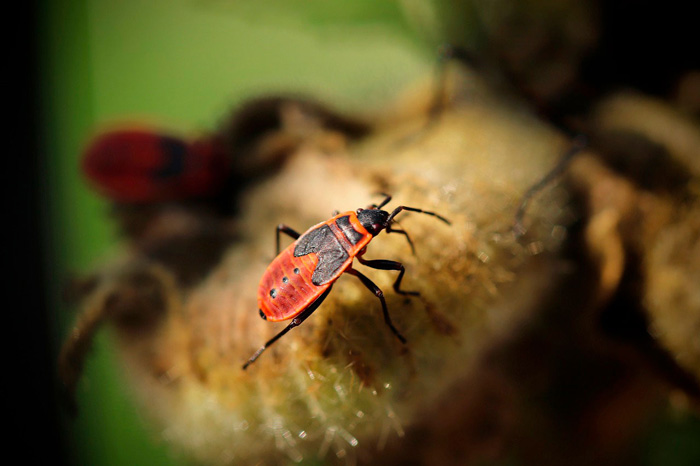
Image credits:MelaniMarfeld

Adult boxelder bugs are about half an inch long. They are black with orange or red markings on their back and have three stripes on the area behind their prothorax. Their wings are flat and overlap to form an ‘x’ shape. Their bodies are shaped like long ovals with six legs and two antennae.
Image credits:davidjmidgley
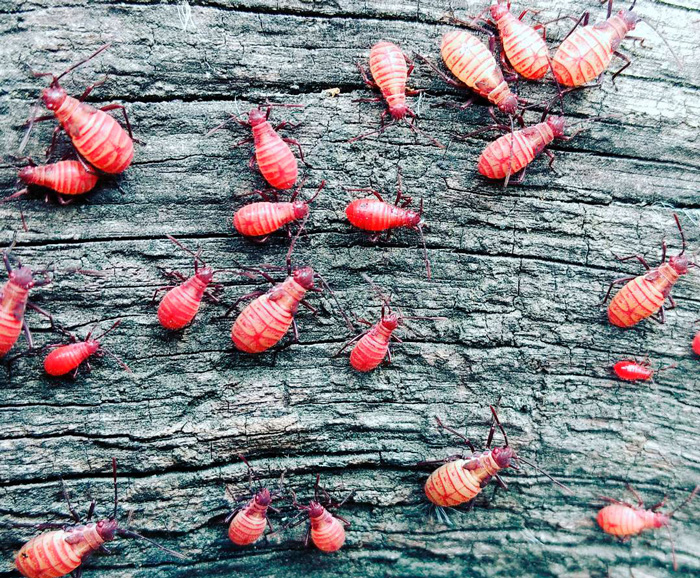
Nymphs are immature boxelder bugs. They look similar to adult insects but are bright red when they hatch and eventually turn black. These bugs are 1/16th of an inch long. You are less likely to come across nymphs in real life.
Did You Know?
Boxelder bugs are often confused withbeetlesor milkweed bugs. However, beetle wings form a straight line and don’t cross to create an ‘x’ shape. On the other hand, milkweed bugs have similar color patterns as boxelder bugs but are brighter red.
Where Do Boxelder Bugs Originate From?
Image credits:Kilbourne
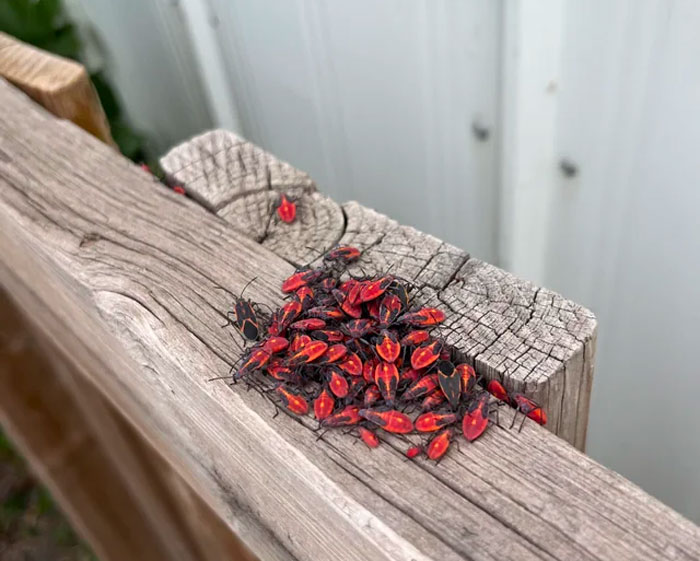
Boxelder bugs are primarily found in the Western part of the United States. But they can also be found in Eastern Canada and throughout Nevada’s Western and Eastern portions. They congregate wherever boxelder trees are found.
What Do Boxelder Bugs Eat?
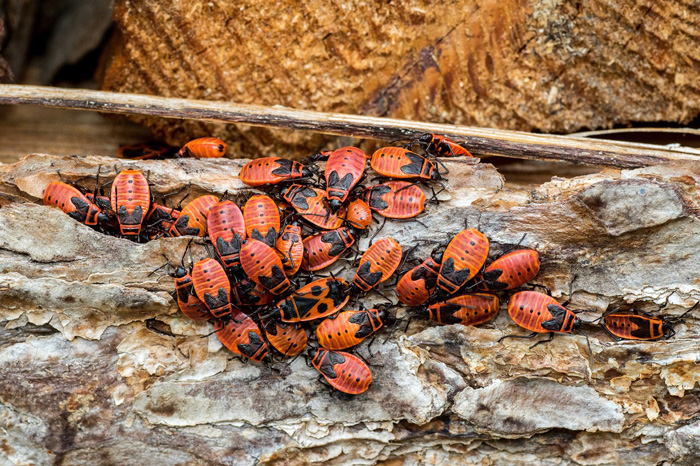
Boxelder bugs primarily feed on the seeds, leaves, and flowers of boxelder trees (Acer negundo), hence their name. While they consume fallen seeds, they are also known to gather in clusters and feed on newly developed leaves, flowers, and seeds of female boxelder trees and maple trees. Sometimes, they also feed off the male boxelder trees or fruit and ash trees. This behavior is less common.
What is the Lifecycle of the Boxelder Bug?
Boxelder bugs can produce 1–3 generations every year, yet they have a lifespan of just one year. The boxelder tree buds open when the weather starts warming up in late April or early May. This is when the bugs emerge from hibernation, searching for shelter and nourishment.
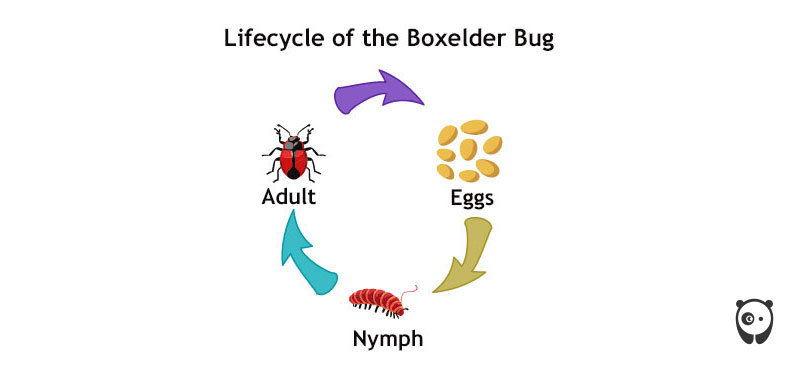
Egg
During the springtime, female boxelder bugs lay eggs in crevices on the tree bark or leaves. They can produce up to 200–300 eggs at once. These eggs take 10–14 days to hatch.
Nymph
Adult
You might start finding adult boxelder bugs in your home between August and September when they search for protected areas to stay during the winter. They prefer warm and dry places, often found in attics or ditches. Since they can fly, they might travel as far as two miles.
Once the colder months have passed, the bugs wake up from hibernation and become active. That’s when you will notice large swarms around your home. Seeing so many bugs at once might be scary!
Are Boxelder Bugs Harmful?
These bugs aren’t considered dangerous or harmful to humans or pets. They don’t bite or sting, and they don’t transmit diseases. However, they can become a nuisance when they enter homes in large numbers, seeking warmth during cooler months. Here are a few things you should know about them.

The Effect of Boxelder Bugs on Outdoor Areas
If there is an infestation of boxelder bugs outside your home, they can cause fruit and leaf deformities in the plants they feed on. The leaves might turn slightly yellow and crinkle due to the bugs’ sap-sucking behavior. Additionally, fruits might lose their aesthetic appeal, which can be troublesome, especially in orchards. Despite these issues, plants can generally survive a boxelder beetle swarm.
The Effect of Boxelder Bugs on Indoor Areas
They don’t cause property damage, but their feces might leave a reddish stain on light-colored surfaces. They also release an unpleasant smell when crushed. Since they congregate in large numbers, they can be a source of filth, which is undesirable. Even though boxelder bugs aren’t poisonous, keep them away from your pets because they taste foul and can upset their stomachs.
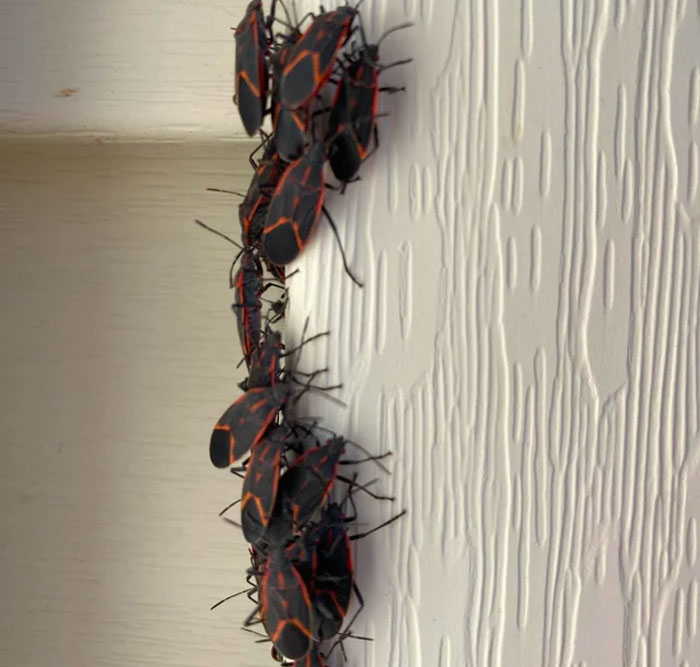
Image credits:DonGold60
10 Ways to Get Rid of Boxelder Bugs for Good
Here are a few valuable tips to kill boxelder bugs and keep them from returning to your house. Whether you’re dealing with an infestation inside your home or outdoors, these steps will help you keep boxelder bugs away.
However, before you get rid of boxelder bugs, remember to
❗wear appropriate safety gearsuch as heavy-duty gloves, a dust mask, long pants, a long-sleeve shirt, and eye goggles;
❗carefully read instructionson the labels of insecticides and sealants;
❗keep a trash bag readyto collect dirt and dead boxelder bugs.
How to Prevent Boxelder Bugs in the First Place
Image credits:Erik Mclean
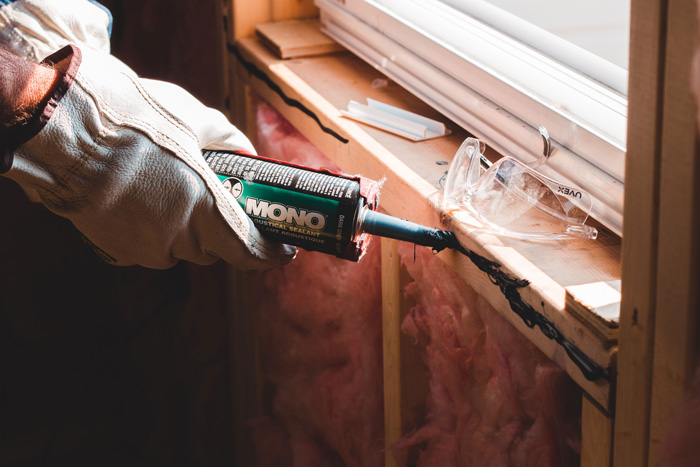
Regularly inspect sites where boxelder bugs might hide. Clear up fallen plant leaves or sticks as often as possible to keep these bugs away. You can also swap out the plants that attract boxelder bugs, such as maple, elm, ash, and boxelder trees.
Get Rid of Boxelder Trees
Image credits:tsparks31
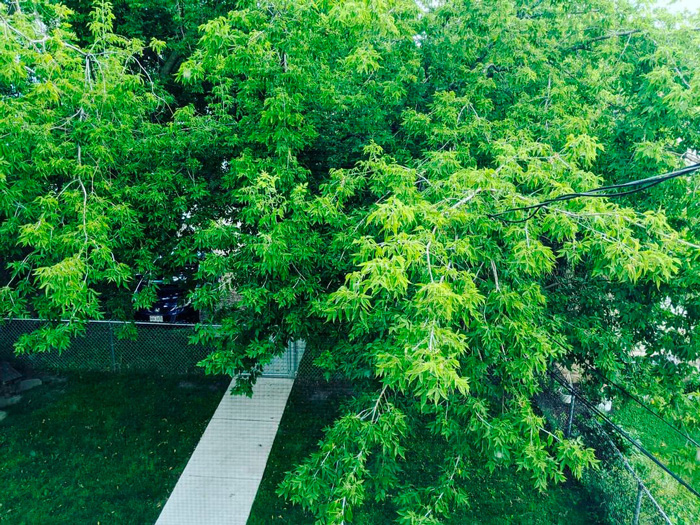
If you have this tree on your property, consider cutting it down and planting another tree instead. If you’re struggling with how to get rid of boxelder bugs permanently, this might just be the hack you’re looking for.
A less drastic measure is to trim the plant regularly and collect the seed pods as they fall. Theseunusual bugscan also travel as far as two miles. Consider a permanent community-wide solution if these trees are widespread in your locality.
How to Kill Boxelder Bugs With a Vacuum
Image credits:Anete Lusina

Boxelder bugs release an unpleasant odor when crushed, so it’s best to kill them without squishing them. A vacuum cleaner is your best bet to eliminate these stink bugs. Also, don’t leavedead bugslying around because they attract larders and carpet beetles.
Once you’ve collected all the beetles, empty your vacuum into a bag with a quarter inch of soapy water. This will suffocate the bugs. Throw the bag away immediately. Clean the areas where you found the bugs so that no stink lingers.
Use a Garden Hose
Image credits:Karolina Grabowska

An Insecticide Will Help With Boxelder Bug Control
Image credits:Tran Nam Trung
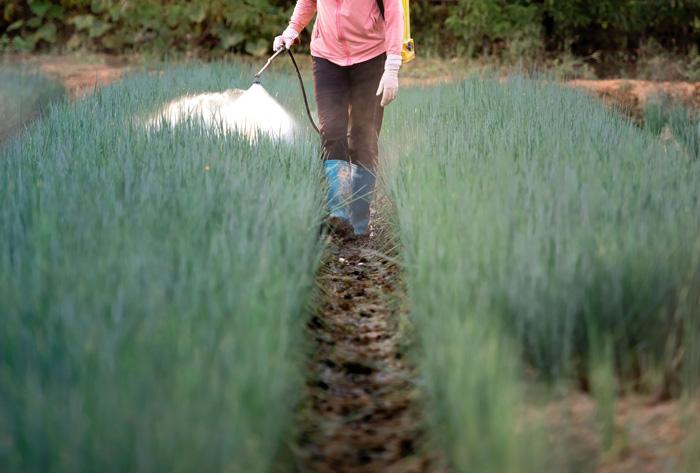
Spray the insecticide around the perimeter of your home around late summer or early fall for the best results. The issue with using insecticides repeatedly is that boxelder bugs get immune to the formula. In such cases, use pesticides as a last resort.
❗Remember to follow all the safety precautions mentioned on the spray’s label and keep it out of reach of children and pets.
Spray Hot Water
Image credits:Thirdman
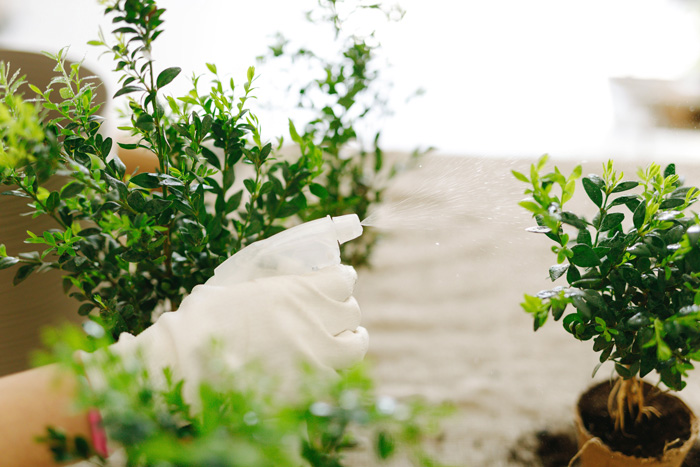
An easy pest control method is to kill the bugs with hot water. Boxelder bugs will die if their thermal threshold is exceeded. You must spray water heated to 160–180°F. Be careful with this method because you can get hurt or burnt.
Control a Boxelder Bug Swarm With Pyrethrin
Image credits:Mariakray

Pyrethrin is an insecticide that is naturally found inchrysanthemum flowers, and it helps kill boxelder beetles. Spray the outside of your house to clear any boxelder bug infestation quickly. You can also apply it to cracks and holes where you think the insects might hide.
Don’t spray this chemical on your plants orlawnbecause it can stunt their growth. You can also use it to control the spread of other insects, such as mosquitoes, fleas, flies, moths, and ants.
Sprinkle Borax or Diatomaceous Earth
Image credits:BeatBoxinDaPussy
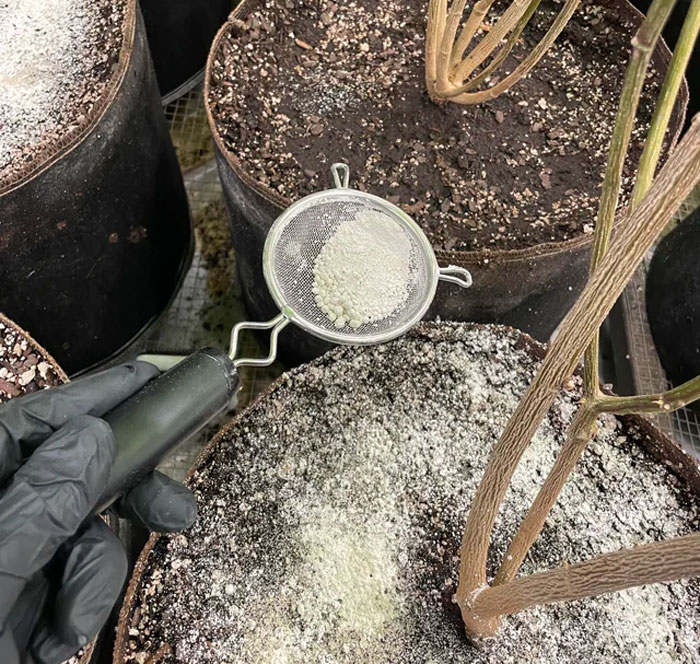
Use these powders to naturally get rid of boxelder bugs outside. Sprinkle them on entry points such as doorways and windowsills. Diatomaceous earth, in particular, is a non-toxic substance that is safe for pets and humans.
Physically Capture Boxelder Bugs
Image credits:reddit.com
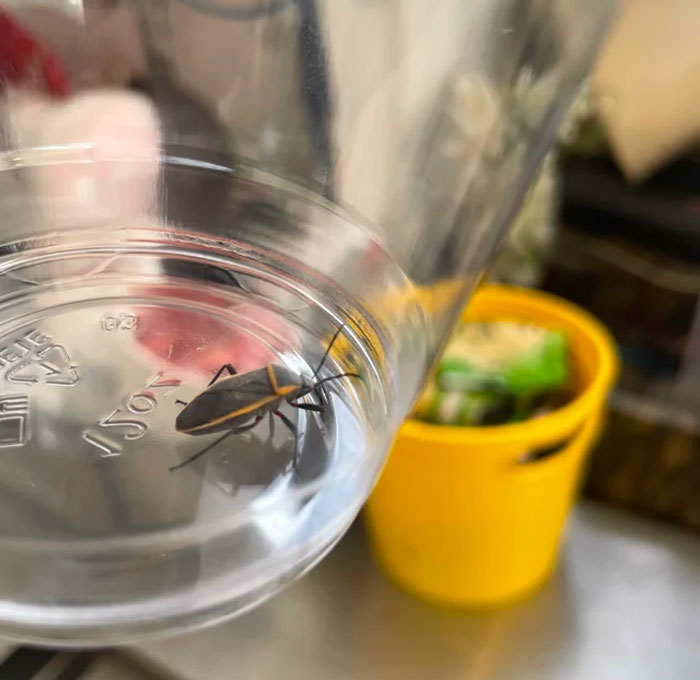
If youhate bugs, this will be difficult because it might involve close contact with boxelder beetles. This method entails capturing them in jars, on sticky pads, or glue traps, after which you will need to release them far away from your home. Be careful not to squash the bugs, or else they will release an unpleasant smell.
Natural Bug Deterrants
Image credits:Vladimir Gladkov
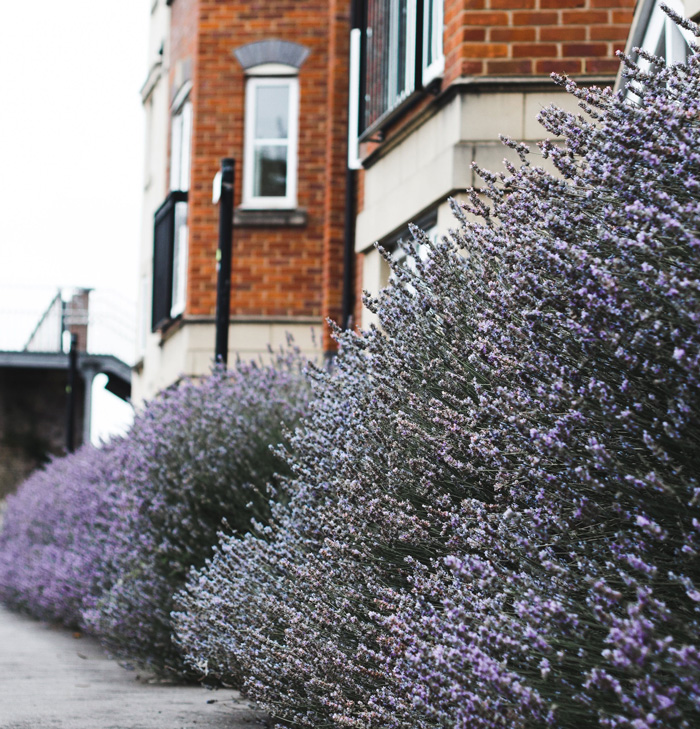
In addition to these remedies, certain plants can prevent boxelder bugs from returning. Mums flowers, citrus plants, and citrus oils emit scents that repel boxelder bugs. Consider planting these trees or using their oils in areas where the bugs congregate. Herbs like sage, cloves, andlavendercan also reduce the likelihood of a boxelder bug infestation.
Time for Boxelder Bugs to Bug Off!
Although boxelder bugs don’t bite or cause damage, it’s best not to let these insects infest your garden or home. Hence, utilize the ways above to get rid of boxelder bugs once and for all because they certainly aren’t paying you rent! Let us know whether you found any of these tips helpful, and share this article with a neighbor who might be struggling with the same issue. Keeping with the bugs theme, here are somequirky insect cartoonsto make you laugh!

Most Asked Questions About Boxelder Bugs
How to Get Rid of Female Boxelder Trees?
Female boxelder trees are the preferred breeding grounds for boxelder bugs, so removing them can help prevent the insects from returning. You can cut the trees down to a stump with the help of a mulcher. It will then be easier to remove the stump and roots mechanically.
Do Boxelder Bugs Bite?
Boxelder bugs don’t bite but might pierce the skin as a defensive attack if provoked. This is similar to amosquito biteand only causes minor irritation to the skin. Boxelder beetles also can’t sting because they don’t have stingers.
What Kills Boxelder Bugs?
What Does Dish Soap Do to Boxelder Bugs?
You can make a boxelder bug-killing spray with water and dish soap. This solution breaks down the bugs’ outer shells, which can cause them to dehydrate and die. You can also drown them in a bucket of soapy water.
Home & Design